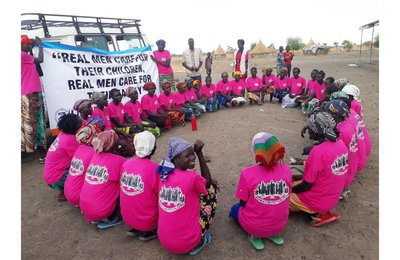In recent years we have been continually told that our demand for Africa’s raw materials causes and fuels war in Africa. Diamonds, coltan, oil have all been cited as causes of war in countries like Angola and Congo. But the prime causes of most of Africa’s wars are political. Economic factors come into play to fuel the wars. There is not much beneath the soil of Somalia, or if there is, it is still to be discovered. Somalia’s war has lasted more than 20 years and reflects traditional patterns of conflict in Somalia. Battles between the nomadic clans for grazing land, camels and women were common. The disputed were mediated by elders but often they became grudge wars that continued for years.
So in one way the war is the continuation of Somali tradition. The difference is that, before, it was fought with spears and knives and then rifles. When the battle for Mogadishu started in 1990 it was fought with tanks and heavy artillery, then with heavy and light machine guns and mortars. Today it is fought with car bombs and suicide bombers.
The Americans tried to make peace in 1991 and sent in the marines, but their lack of understanding of Somali culture and politics caused Somalis to unite against them, and they pulled out after the Blackhawk Down incident in 1993 and stopped funding the UN peacekeeping force.
Somalia was left to stew.
It did, but gradually the war has shrunk to the battle for Mogadishu, the capital, and the rich farmlands of the Juba Valley. Islamic fundamentalism has become an important player in terms of funding, tactics and motivation, though it is not clear who is using who – Al Qaeda allies making Somalia the new anti-Western battleground, or Somali warlords hijacking Islamic fundamentalist rhetoric to suck in foreign allies and funding. Islamic fundamentalism of the Saudi Arabian variety has no tradition in Somalia.
Meanwhile the former British part of Somalia, Somaliland, declared independence in 1991 and, despite some dangerous incidents, has established a democratic system that has produced two peaceful changes of government. Puntland, the north-east of Somalia, also has a temporary administration, but is ready to reunite with the rest of the country when there is peace.
There was a period of peace in 2005 with the establishment of the Union of Islamic Courts, when the warlords were driven out by a popular uprising and new armed associations based on Islamic law and order created security in Mogadishu and southern Somalia. The road blocks where traders were fleeced by the gunmen disappeared and trade thrived again. Somalis began to return home. But Ethiopia, claiming the courts were Al Qaeda-inspired, persuaded the US and Britain to allow them to invade. The Courts system was broken up, the warlords returned and a ‘Transitional Federal Government’, a self-appointed parliament and government, took over. One of the former Islamic Courts leaders, Sheik Sharif Sheik Ahmed, became President.
How much popular support exists for either the TFG or Shabaab is difficult to judge. Both rely on outside support for their legitimacy and weaponry. Neither can be trusted to speak for the Somali people. And the TFG also refuses to accept the secession of Somaliland, so peace in the south – if it could ever be achieved – would mean war in the north. The prospects for peace in Somalia look as distant as ever.








